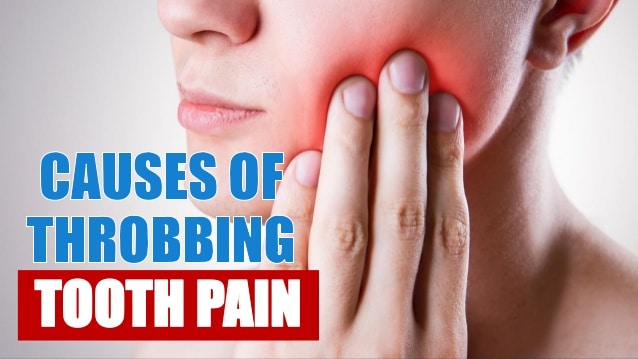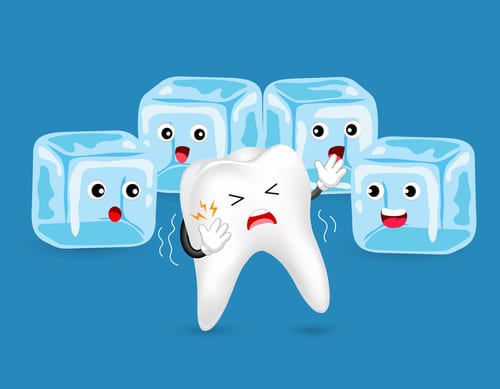There are a few statements in dentistry that just make you want to cringe.
“Can you believe it? I had a filling done and I’m still having the same pain as before.”
Or worse yet…. “I wasn’t having tooth pain before but now I’m having pain after a filling.”
To a dentist and a patient, those are equally disappointing to hear, but hang on. Don’t be too upset with your dentist. Tooth pain weeks after a filling is actually more common than you may think. But is it normal?
In this article we’ll discuss what you need to know about tooth pain after fillings. We’ll talk about what’s normal and what requires a simple followup. We’ll talk about why tooth sensitivity months after filling happens and we’ll even talk about what to do about more severe situations like throbbing tooth pain after filling.
So You Have Tooth Pain After Filling…What’s Next?
Wow, pain after a filling, that seems bad. But is it really?
Studies show that sensitivity on 63% of teeth was resolved after a composite filling, but 10% of teeth that were not sensitive….became sensitive. What gives?
Think of how the process works. A tooth sometimes has a small cavity that is not yet sensitive. The tooth is restored to prevent the decay from growing larger within the tooth. However, in order to restore the tooth, treatment must be done on it.
The treatment essentially creates a temporary “bruise” of the tooth.
A tooth heals similar to if you had a surgery to improve any other body part. There is initial healing involved. The work requires time to settle in and heal stronger. Healing sometimes feels like forever when it’s going on for days or weeks. However, the goal is not the short term. It’s the benefits longterm.
So what is a normal for tooth pain after a filling?
Mild sensitivity. Particularly to the gums at the injection site, but also the tooth. If you have mild sensitivity on the tooth after a filling, do not be alarmed. Sensitivity is common for the first 2 to 4 weeks. Mild sensitivity is common and should gradually improve.
Let’s dive deeper into more specifics.
Tooth Pain After Filling When Chewing

Do you know what the most common follow-up after a filling is for?
Tooth pain after a filling when chewing. The technical term is hyperocclusion. In other words, the filling is taller than the tooth was before.
Studies show hyperocclusion is one of the most common and easy to adjust issues after a filling.
Now here’s where it gets interesting. It might seem like the bite is an insignificant issue. How much pain could a tall filling actually cause? It turns out a lot.
A tall filling not only affects the tooth, but it can affect the jaw and muscles. When a tooth hits harder than it should, the tooth not only is absorbing more force but the entire head.
That’s why you can get headaches on one side of your head after a filling. If you are getting unusual headaches pain after a filling, you can probably the bite needs to be adjusted.
Often, after the bite is adjusted, much of the headache or tooth pain after a filling is relieved. Problem solved.
Tooth Sensitivity Months After Filling
We talked about how some tooth sensitivity the first 2 to 4 weeks is relatively normal. It typically resolves. But what if you’re having tooth sensitivity months after a filling? What’s going on?
Sensitivity can seem to last forever after a filling sometimes…like months before it gradually improves. That even can be considered par for the course.
The reason is due to what is called reversible pulpitis. Reversible pulpitis is essentially a long-term bruise of the tooth and nerve which takes time to reverse. Discuss with your dentist. If they recommend watching the tooth over a period of months, trust them. Give it time. Often times the sensitivity is reversible. Giving the tooth time sure beats jumping to more dental treatment like a root canal too soon.
How to Cope with Tooth Sensitivity After a Filling
Sensitivity after a filling can be managed in a few different ways. This is what is best:
- Take an over the counter pain medication consistently every 6-8 hours, such as ibuprofen or naproxen
- Be mindful to avoid excessively hot or cold foods and drinks
- Using a desensitizing toothpaste
- Chewing with the opposite side of your mouth
- Use a mouth rinse that contains fluoride at least once per day
- If you’re really struggling for more than 48 hours or if your bite feels high, contact your dentist to discuss
The big takeaway with managing tooth sensitivity after a filling is to give it a chance to heal.
The above tips help to ease the time of tooth sensitivity after a filling. Studies show that potassium nitrate significantly helps to reduce temperature sensitivity after a filing. Potassium nitrate is commonly found in toothpaste for sensitive teeth. Be sure potassium nitrate is listed as the active ingredient in the toothpaste you select for sensitivity.
In addition, studies also show that fluoride significantly reduces tooth sensitivity. Fluoride is often found in over the counter toothpaste and mouth rinses. Be sure to utilize a toothpaste or mouth rinse that contains fluoride to help improve the sensitivity.
The Big Uh-OH: Throbbing Tooth Pain After Fillings

So here’s the deal, a little sensitivity after a filling is normal. A lot of pain after a filling is….not.
If you are having severe throbbing tooth pain after fillings that last more than a few hours, you should contact your dentist to discuss.
The point of a filling is to remove an infected part of tooth and restore it. Now you have to remember that the concept of tooth decay is a spectrum. Tooth decay begins as a small break in the enamel, and progresses deeper into the tooth over time. Eventually, the decay can reach close to the nerve.
Sometimes the decay is deep. In that case, when a filling is placed, removing the decay can permanently irritate the nerve. The irritation is called irreversible pulpitis. In other words, the pulp which contains the nerve has become irreversibly inflamed.
What does irreversible pulpitis feel like?
It’s more severe than normal sensitivity after a filling. The tooth can hurt due to hot and cold temperature, biting, and here’s the big one…the tooth can have a throbbing pain for no reason at all.
If you are having throbbing tooth pain after a filling that is keeping you up at night, it’s a sign followup is needed. Although the dentist attempted to restore the tooth with a filling, the depth of decay may have been a stretch for what is possible with a filling. When there is throbbing tooth pain after a filling, it is a sign that the tooth may require a root canal to successfully treat it.
Tooth Pain After Filling: The Big Takeaway
The key to understand is that some sensitivity after a filling is common. Hang in there for the first few weeks and don’t panic. If the bite feels off or the pain is worsening, contact your dentist to discuss. Often a simple fix and some patience are all it takes to set the tooth back on the right path.


